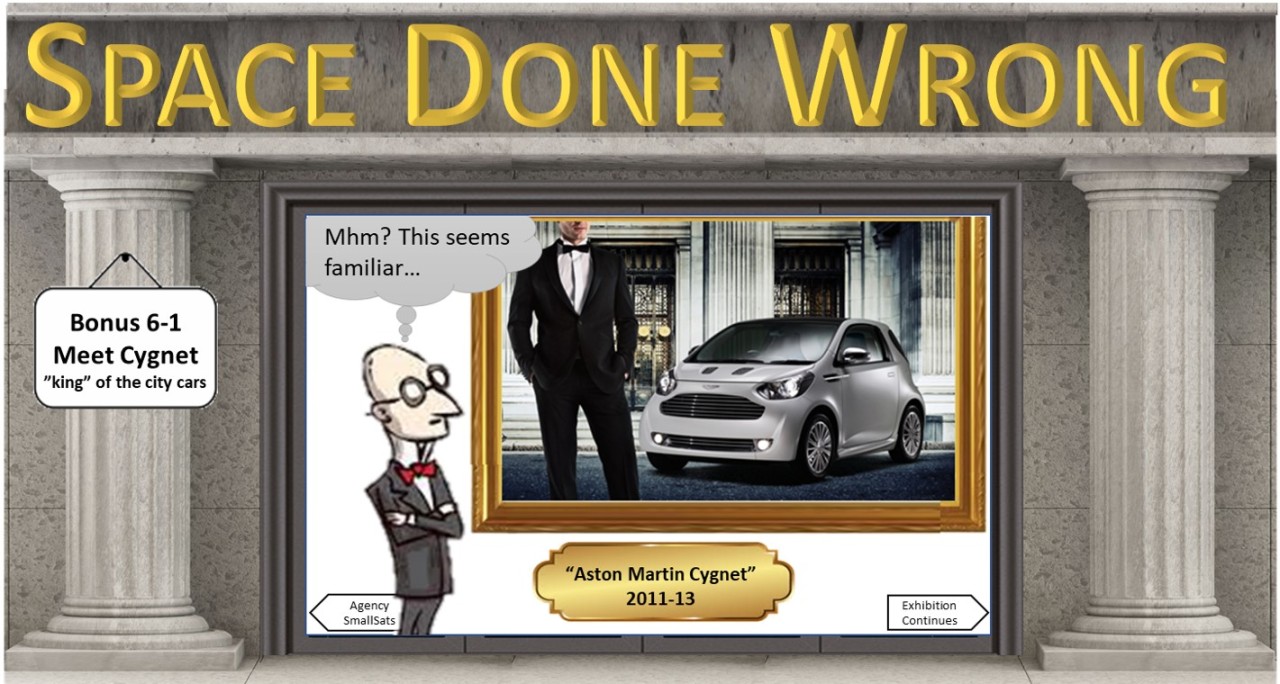Sometimes a look towards other industries can be eye opening. And I believe especially automotive can teach the space industry quite a bit. Normally, I would go and talk about serial manufacturing and the Henry Ford Moment but would you have know that luxury sports cars can be equally enticing? Let’s have a look.
About Luxury Sports Cars (& Space)
Most traditional space companies space companies are like luxury car makers. They are focused on:
- 100% performance regardless of cost
- Quality control above everything
- Heritage (a good brand) can only be replaced by more of the former.

Consequently, these cars, which are the dreams and aspirations of many, are as spectacular as they are expensive. Furthermore, they are usually big, powerful and come in very small numbers.
Traditional satellites are like luxury sports cars: rare technological marvels.
Sometimes these companies contemplate whether it would be good to enter other markets as well. A smaller car perhaps. One that even if not home to the race track one could do a quick grocery run with or drive to a crowded city centre for a night time martini, perhaps?
Meet the Aston Martin Cygnet
Sometime in the early 2000s the British luxury sports car maker Aston Martin must have been in such a situation. EU Politics demanded that the fleet consumption should be lower and electric cars where not en vogue yet. Building a small car that to help bring down the fleet average seemed to make sense. For all that matters there are significantly more city cars then there are luxury sports cars and catching even a tiny piece of that market would already solve the predicament. And so in 2010 the Aston Martin Cygnet was born and we get to learn what happens when a luxury car maker does build a small car.

According to Aston Martin the car was:
- “Tailor fit for the city”
- “Hand-crafted with painstaking attention to detail”
- “Cygnet signifies our exclusivity and our heritage”
And no, I did not make them up, in case you wonder. These slogans are 1:1 drafted from the Aston Martin webpage.
And if you are the person that has only ever seen cars of the likes of a DB8 Vantage in your life, then maybe you think, yes actually that a good idea: “My wife can go to Christies with it and when we are going to the opera then it will be much easier to find our way in the city centre. Truly the king of a city car”.
Aston Martin makes sense, only if your past car experience is limited to luxury sports cars and suddenly you need a city car.
That is until you realize what is really under the hood… that the Cygnet is only a custom painted Toyota.

Needless to say the Cygnet flopped. It did not address what customers actually wanted. Maybe it would have been good for Aston Martin to ask themselves these questions:
- is the Cygnet really what the customers expect from a small car?
- is the style all that matters while you commute to work?
- would you pay 4x the price for a custom painted Toyota?
What can the space industry learn from this?
The space industry is in a similar predicament. There are the established big satellites of the major space agencies: Landsat, NOAA, Copernicus, you name it and there are other more agile players which outside these realms build surprisingly capable small satellites often using surprisingly simple materials, tools and processes. However, instead of focusing on what the space agencies are good at, namely pushing the boundaries of what is known the agencies in conjunction with their symbiotic traditional large industries also start building these satellites, too. At least this is what they believe they do.

What they create instead is :
- technological marvels in their own right
- however, 1/10 of the capabilities but 25-50% of the cost of traditional big satellites
And so there is the question whether that is really the best way to build these small satellites. For me the answer is a clear No. No you cannot use the same technologies and processes that you use for bigger satellites, apply them on a smaller platform and expect miracles.
To take the same materials and processes from big satellites and try to apply them to smaller ones does not work.
Instead, one needs to start with a clean sheet. This is often simpler for a smaller & less old company that for the established power houses. The success from Airbus OneWeb shows that it is nevertheless not impossible. The question is however how does Airbus Defence and Space live with the internal friction that in one part of the company 250 people produce up to 1000 satellites per year whereas the rest of the 8000 employees build less than 20?

Concluding Thoughts
I personally hope that in a not so distant future small satellites build under agency rules will disappear like the Aston Martin Cygnet and will be replaced by something directly designed and built by industry and consequently much suited to build the applications of the future.
That even power houses like Airbus abandon the idea of agency designed small satellites platform is a good indicator where the future of the industry.
Interestingly, Airbus has started to replace the earlier agency led designs (Astrosat 100 / Myriade) by satellites based on the Oneweb platform.

Since even the big power houses like Airbus abandoning the idea of the traditional agency designed small satellites makes me hopeful even if for now the agencies continue think: “lets stick with what we know”.
How can you help:
This text is part of a series of articles in which the author sets the framework to start a discussion about the wrongs of the space industry. If you have experienced similar things, leave a comment. Other views and opinions are very welcome, too, as they may present a way forward. Please be kind to each other.
Disclaimer
The author’s views are his own do not represent the views of Berlin Space Technologies.


Leave a Reply